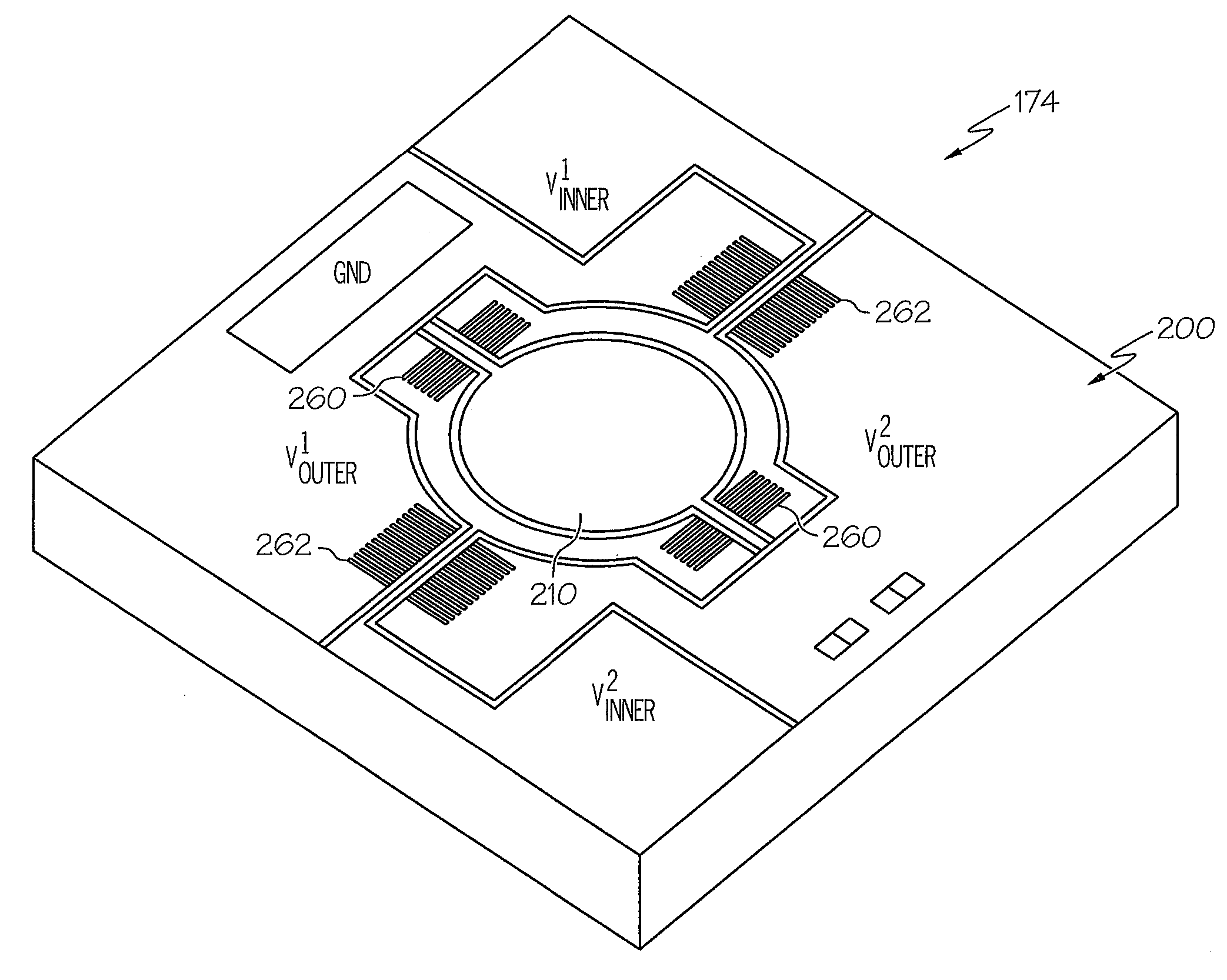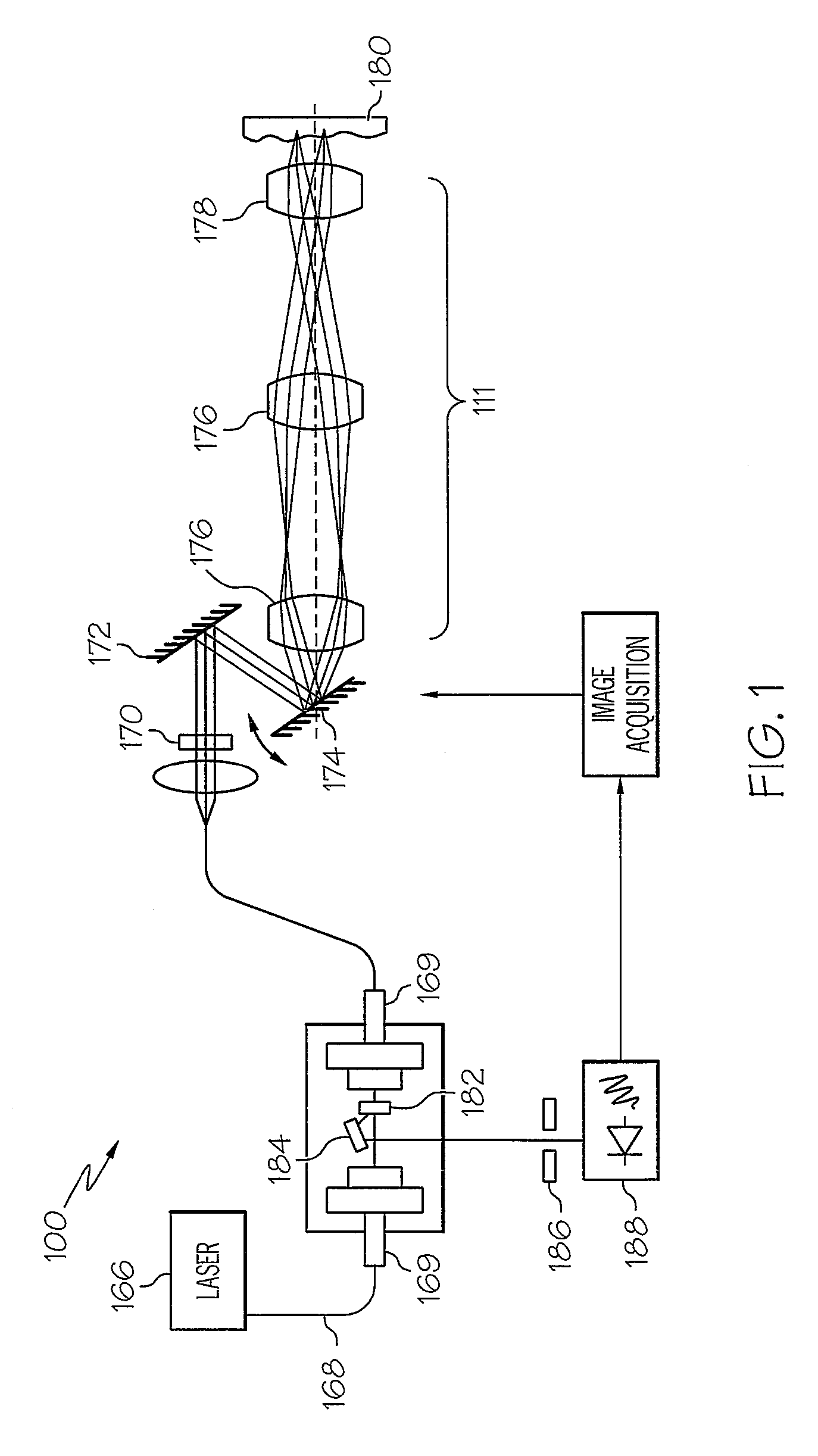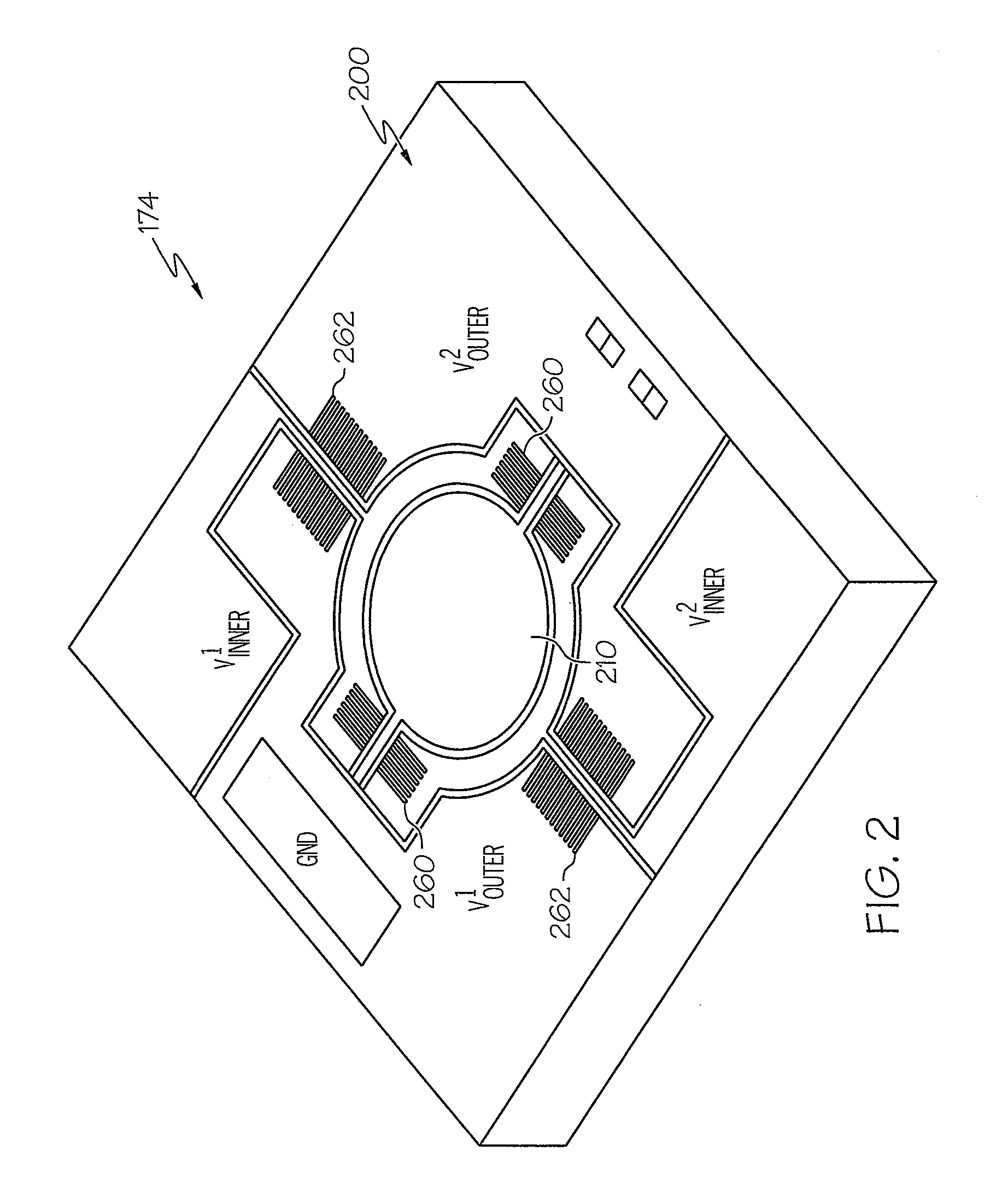Method for Fabricating a Micromirror with Self-Aligned Actuators
a self-aligning actuator and micro-mirror technology, applied in the field of optical scanning devices, can solve the problems of inability to accurately adjust the self-alignment procedure, and inability to achieve perfect linear transformation between input voltage and mechanical scan angl
- Summary
- Abstract
- Description
- Claims
- Application Information
AI Technical Summary
Benefits of technology
Problems solved by technology
Method used
Image
Examples
Embodiment Construction
[0014]Referring now to the drawings and in particular to FIG. 1, there is depicted a diagram of a laser-scanning confocal microscope in which a preferred embodiment of the present invention is applicable. As shown, a laser-scanning confocal microscope 100 includes a diode laser 166, an avalanche photodetector 188, a stationary mirror 172, a movable micromirror 174 and an objective system 111 having a 3× Keplerian beam expander 176 and a high-numerical aperture aspheric objective lens 178.
[0015]A linearly-polarized laser beam from diode laser 166 is initially coupled into a single-mode polarization maintaining (PM) fiber 168. Light exiting PM fiber 168 is then collimated by collimators 169 to a 1 mm diameter beam through a zero-order quarter wave-plate 170 whose axis is oriented at 45° to the incident polarization angle in order to convert the illumination to a circular polarization. After reflection off stationary mirror 172, the illumination is incident on micromirror 174 at 22.5° ...
PUM
 Login to View More
Login to View More Abstract
Description
Claims
Application Information
 Login to View More
Login to View More - R&D
- Intellectual Property
- Life Sciences
- Materials
- Tech Scout
- Unparalleled Data Quality
- Higher Quality Content
- 60% Fewer Hallucinations
Browse by: Latest US Patents, China's latest patents, Technical Efficacy Thesaurus, Application Domain, Technology Topic, Popular Technical Reports.
© 2025 PatSnap. All rights reserved.Legal|Privacy policy|Modern Slavery Act Transparency Statement|Sitemap|About US| Contact US: help@patsnap.com



